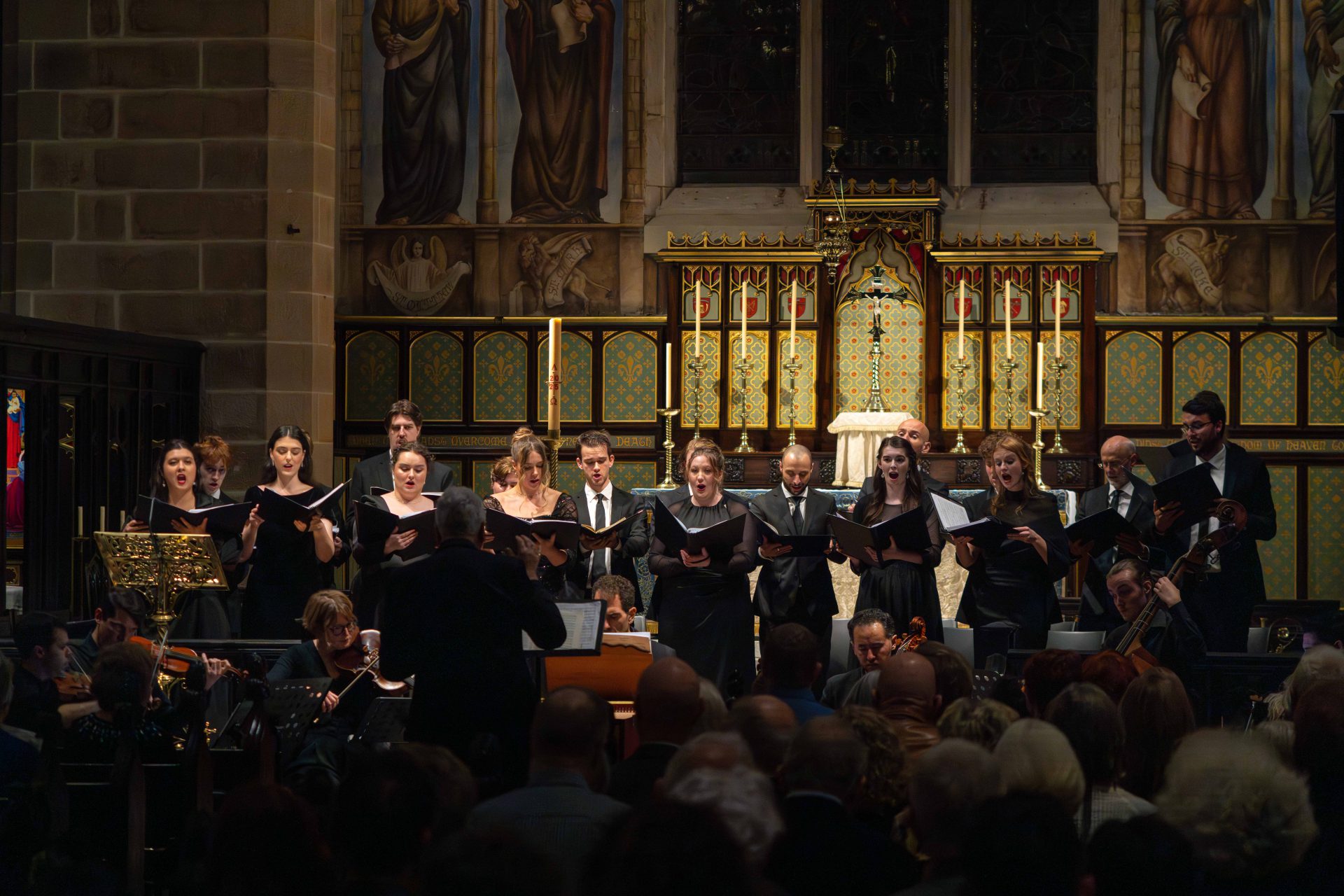Although Handel was well known for economy of musical technique, he was not known for brevity.
Like most of his oratorios, Samson is a lengthy afternoon feat. This performance was a tastefully abridged 2-hour version. Not much of the drama was sapped.
The orchestra too was pared back. The Muffat Collective was joined only by oboes, double bass and one trumpet. But this worked well with a small chorus, which featured members of Pacific Opera Studios. The soloists’ roles were shared between various members of Pacific Opera, to give each a chance to shine. Patricia Turner, recovering from an illness, still gave her all as Delilah, albeit positioned at the back of the stage.
As with all great Baroque drammi per musica, the oratorio started off with a fresh and punchy overture, with a lively B-section. Michael Kaufmann made an excellent start as Samson, in a booming recitative with great gusto. It was clear that much effort went into diction. James Pinneri and Aidan Hodder shared the role of Manoah; the performance of Manoah’s first air was powerful.
By Part 2, the role of Samson was given to Daniel Macey, whose voice was somewhat unsteady but capable of convincingly telling a story through song. It was difficult to keep up with some of the melismas in the duet, “Go baffled coward go”.
Delilah’s first aria featured all the hallmarks of Handel at his programmatic best. As with Handel’s Sweet Bird, “With plaintive notes” features an elegant introduction on strings led by Matthew Greco. The warbling motif recalls the call of a turtledove. Hence “thus coos the turtle”. Turner’s performance of the trills was soft and light.
Samson remains unmoved by Delilah’s seduction. His rebuke, “Your charms to ruin led the way” is usually performed as though it were a buccaneer’s song. Not so here. Greco and Rafael Font performed with many graceful turns and trills to give the effect of a lament. In the next aria, we have a delightful echo between Delilah and Christina Pilgrim, who is positioned on the other end of the reverberant Christ Church St Laurence.
It is a truism that whenever the libretto of any Baroque song mentions “law” or “commandment”, we have canonic imitation (“canon” itself being Latin for law, with Semitic origins bearing the same meaning). So it is with the chorus of the Israelites which closes the second Act – “To man God’s universal law”.
The dual chorus of Israelites and Philistines looks forward to the famous “Baal” chorus of Mendelssohn’s Elijah, one century later. This setting of the Old Testament contest had more than a hint of the battaglia form, as did the later chorus of Israelites, “With thunder armed, great God, arise”.
By this point, Kaufmann had returned as Samson. His air, “Thus when the sun in ‘s water bed”, has an introduction and harmonic progression not unlike the “thou wouldst not leave” from the Messiah, with all its nostalgic warmth.
Manoah’s recitative “I know your friendly minds and – ” is interrupted by The Muffat Collective at its best, with a series of fiery cascading chromatics redolent of a thunderbolt. The choir was directed at a sprightly pace, to make the jumps in “no help is nigh” more jagged and the soft denouement even softer.
But the highlight of the night was Galatea Kneath’s performance of the famous “Let the bright Seraphim”. The voice of this Justice Francois Kunc & Felicity Rourke Scholar had a distinctive maturity, lightness and control. It was difficult at times to distinguish between voice and Simon Wolnizer on trumpet. The melismas are difficult. The aria poses the same difficulties as its counterpart – Bach’s Jauchzet Gott in allen Landen.
